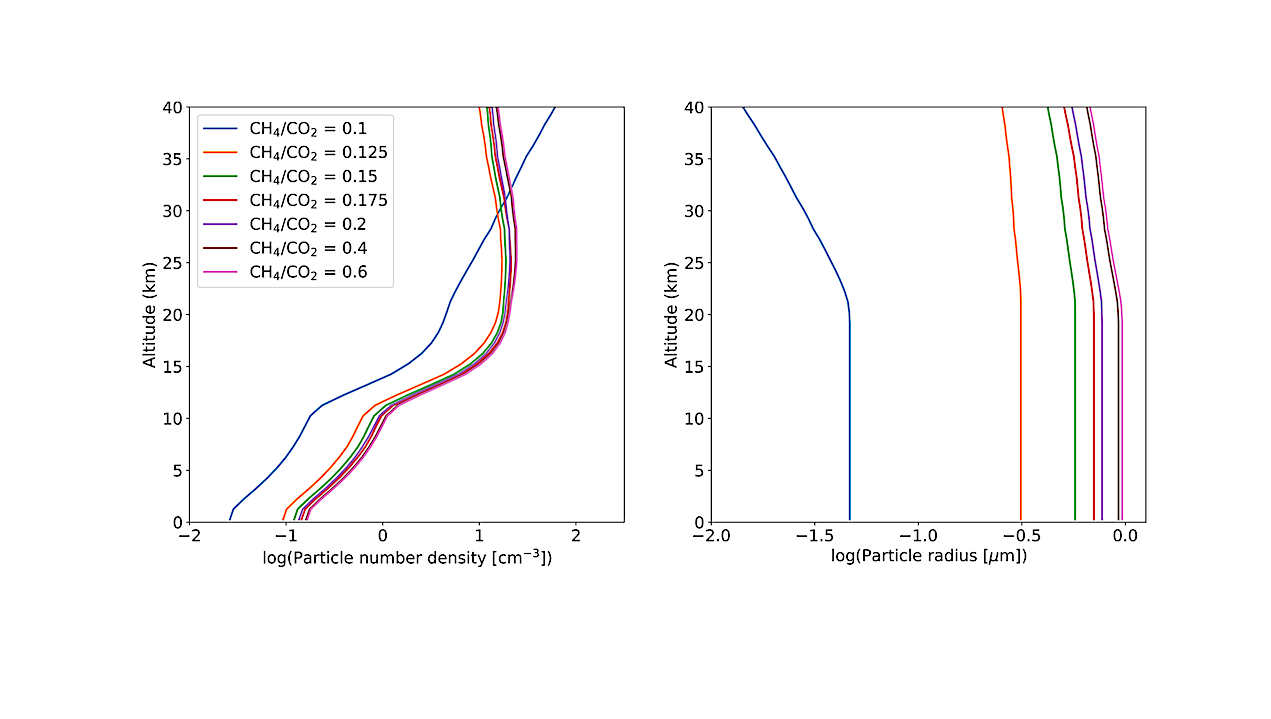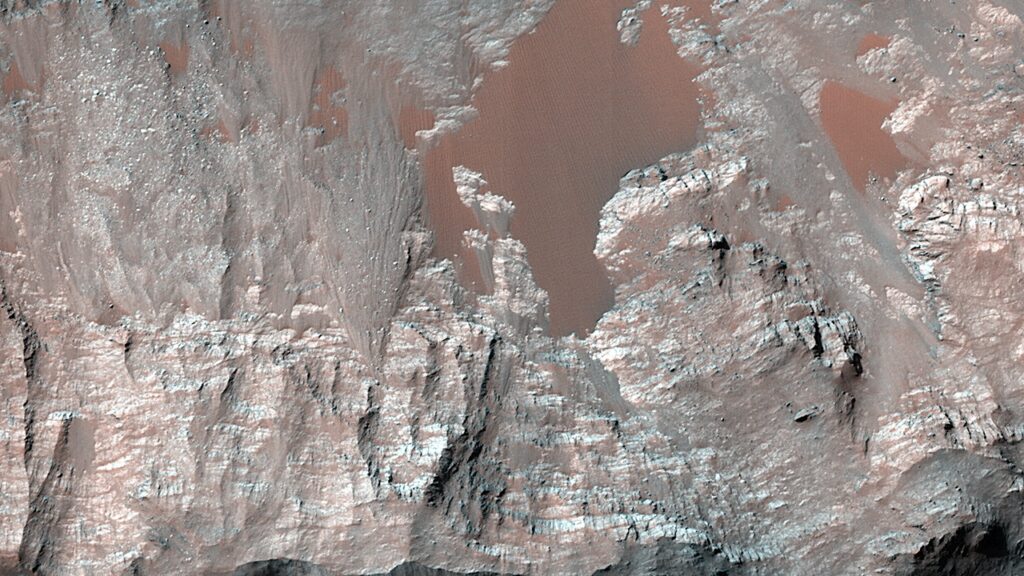3D Simulations Of The Archean Earth Including Photochemical Haze Profiles

We present results from 3D simulations of the Archean Earth including a prescribed (non-interactive) spherical haze generated through a 1D photochemical model.
Our simulations suggest that a thin haze layer, formed when CH4/CO2 = 0.1, leads to global warming of ~10.6 K due to the change of water vapour and cloud feedback, compared to the simulation without any haze.
However, a thicker haze layer, formed when CH4/CO2 > 0.1, leads to global cooling of up to ~65 K as the scattering and absorption of shortwave radiation from the haze reduces the radiation from reaching the planetary surface. A thermal inversion is formed with a lower tropopause as the CH4/CO2 ratio increases.
The haze reaches an optical threshold thickness when CH4/CO2 ~ 0.175 beyond which the atmospheric structure and the global surface temperature do not vary much.
M. T. Mak, N. J. Mayne, D. E. Sergeev, J. Manners, J. K. Eager-Nash, G. Arney, E. Hebrard, K. Kohary
Comments: 30 pages, 22 figures, Accepted in Journal of Geophysical Research: Atmospheres
Subjects: Earth and Planetary Astrophysics (astro-ph.EP); Atmospheric and Oceanic Physics (physics.ao-ph)
Cite as: arXiv:2310.06818 [astro-ph.EP] (or arXiv:2310.06818v1 [astro-ph.EP] for this version)
https://doi.org/10.48550/arXiv.2310.06818
Focus to learn more
Submission history
From: Mei Ting Mak
[v1] Tue, 10 Oct 2023 17:43:07 UTC (9,674 KB)
https://arxiv.org/abs/2310.06818
Astrobiology








